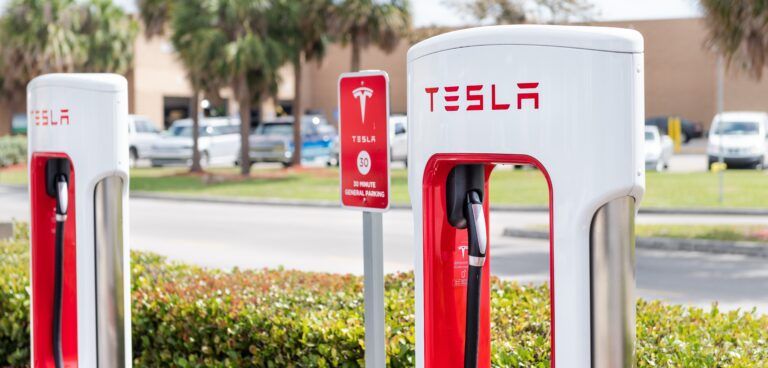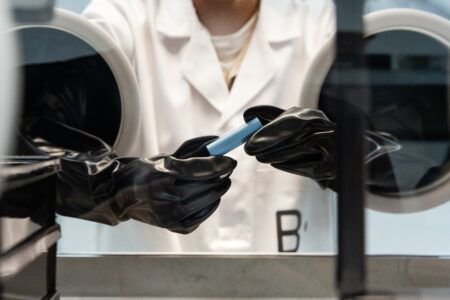Tesla is set to hold its much-anticipated Battery Day on September 22 where CEO Elon Musk is expected to share information about a battery boasting a million-mile lifetime and announce the latest on Tesla’s efforts to reduce cobalt in its battery packs.
Here in the UK, through UK Research and Innovation (UKRI), the government is investing up to £274 million into The Faraday Battery Challenge, dedicated to advancing the production, use and recycling of batteries to help keep the UK as a global leader in battery technologies.
Professor Peter Bruce, chief scientist at the Faraday Institution discusses his predictions for the announcement.
What does the Faraday Institution make of Tesla’s past announcements and what are their predictions for this one?
The electric vehicle battery market is a rapidly changing and highly competitive industrial segment. While past announcements have drawn some criticism from investors as over promising and under delivering, there is little doubt that Tesla is pushing innovation at a quick pace. Like all of us in this sector, Tesla understands what is required to make batteries less expensive and have better performance.
We are likely to hear an update on the start of production at the new Berlin gigafactory and longer-term plans for Tesla’s global battery manufacturing capacity.
The UK could be an attractive prospect for Tesla in the longer term. The UK provides a compelling environment for battery manufacturing – with its low carbon energy, flexible, skilled and productive workforce, and its strong research and innovation ecosystems to support cell production at a gigafactory.
Batteries that enable EVs to travel up to 50% further per charge. This could include an announcement on high capacity anodes, deploying either silicon or lithium metal. These anodes could lead to future generations of commercial batteries with a capacity of above 400 Wh/kg that Elon Musk has suggested will be in mass produced EVs in just a few years’ time.
We are expecting further details on the “million-mile battery” using single crystal electrode materials and electrolyte additives that essentially stop degradation in a working battery, making the lifetime of the battery longer than the lifetime of the car.
We would also predict low cost and more environmentally friendly manufacturing methods based on solvent-free coating techniques, of which the Maxwell dry manufacturing process is the most realistic true recent innovation in this space.
What could the Faraday Institution offer Tesla?
The Faraday Institution is pursuing a portfolio of projects that aim to both maximize the potential of Li-ion batteries and push beyond Li-on performance limitations by breaking down the barriers that are preventing the commercialization of other battery chemistries.
The Faraday Institution’s Multi-scale Modelling project is driving near term improvements in EV performance in multiple ways. It is guiding both developments in battery control strategies to speed up fast charging and prolonging life, and is steering the research directions for next-generation materials. By developing a new technical standard, it is giving industry the ability to optimize cell design for thermal performance to improve EV range and lifetime. It is also launching a fast, versatile and powerful modeling tool to allow battery designers in industry to accelerate battery pack design and deliver improvements to commercial battery performance, lifetime and safety.
With the aim of enabling longer term improvements in EVs the Faraday Institution has two large projects that are furthering the understanding of solid-state batteries that could lead to step changes in battery range and safety, and lithium-sulfur batteries that have the potential to be a lighter-weight alternative to Li-ion, so opening up the electrification of multiple sectors, including aerospace.
The Faraday Institution’s research model is different to many other groups around the world. It funds highly collaborative projects, integrating the efforts of 450 researchers across 22 universities and focusing efforts on tackling specific thorny research issues that, should they be overcome, could be game changers for the automotive and other sectors.
Tesla is working to improve the cost and durability of its battery technology. Why is this such a roadblock and what is the Faraday Institution doing to progress this?
One reason why it takes such a long time to get scientific breakthroughs into commercialized vehicles is the absolute confidence vehicle manufacturers need to have that any new technology has a long life, is safe and reliable. The profitability of the company relies on that.
Batteries contain expensive materials and can be costly to manufacture. They currently make up 40% of the value of an EV. Groups around the world – including the Faraday Institution – are pursuing alternative chemistries that use less expensive materials, or inexpensive routes to making them. For example, the Faraday Institution has one of the world’s largest, best funded, dedicated lithium-sulfur battery projects.
The performance of battery cells inherently reduces with time and use. The first Li-ion batteries degraded very quickly but a variety of better technologies deploying advances in battery chemistry have been commercialized since then. These have significantly reduced the rate at which the physical and chemical processes occur that lead to a reduction in performance. Tesla’s “million-mile” battery is a culmination of this. But there is still a fundamental lack of understanding regarding the mechanisms of battery degradation and the Faraday Institution is funding a project involving 80 researchers across nine UK universities to develop the techniques that can probe these processes, getting a better understanding of their mechanisms as a step towards developing different mitigation strategies.





